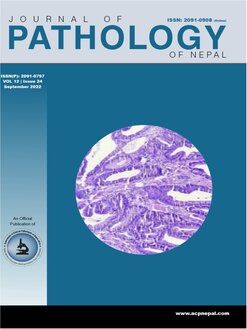Complete blood counts parameters and neonatal sepsis
DOI:
https://doi.org/10.3126/jpn.v12i2.53167Keywords:
Mean Platelet Volume, Neonatal Sepsis, Platelet distribution width, Platelet indicesAbstract
Background: Neonatal sepsis is one of the common causes of neonatal mortality. Blood culture is the gold standard procedure to confirm sepsis. However, the rapid rate of disease progression makes its timely diagnosis and prompt management very crucial before the availability of culture. The study aimed to determine the significance of complete blood count parameters including platelet indices in diagnosing neonatal sepsis.
Materials and Methods: This study included 129 suspected cases of neonatal sepsis admitted to KIST Medical College Teaching Hospital from 15th April 2018 to 14th April 2019. Complete blood count, platelet indices, micro erythrocyte sedimentation rate, C-reactive protein, and blood culture were performed and analyzed.
Results: Of 129 suspected neonatal sepsis, abnormal leukocyte count was encountered in 31 (24.0%) patients. Culture-proven sepsis was seen in 25 (19.1%) patients. The sensitivity and specificity of Neonatal Sepsis Screening Criteria were 10.0% and 80.0% respectively.
Among platelet-derived indices, PDW (full form) had a sensitivity of 80% and specificity of 56% with a cut of 17.02 CV. MPV (full form), with a cut-off value of 9.78 fL had a sensitivity of 88 % with a specificity of 59%. Both MPV and PDW had low positive predictive values (33.3%) but a high negative predictive value (95.2%).
Conclusions: Along with total leukocyte count, platelet indices have shown their significance in determining neonatal sepsis with significant negative predictive value. The addition of MPV and PDW to the Neonatal Sepsis Screening Criteria might help the treating physician to rule in or rule out neonatal sepsis and manage it accordingly.
Downloads
Downloads
Published
How to Cite
Issue
Section
License
Copyright (c) 2022 Shiva Raj K.C., Purnima Gyawali, Ajaya Kumar Dhakal, Geetika K C, Devendra Shrestha

This work is licensed under a Creative Commons Attribution 4.0 International License.
This license enables reusers to distribute, remix, adapt, and build upon the material in any medium or format, so long as attribution is given to the creator. The license allows for commercial use.




